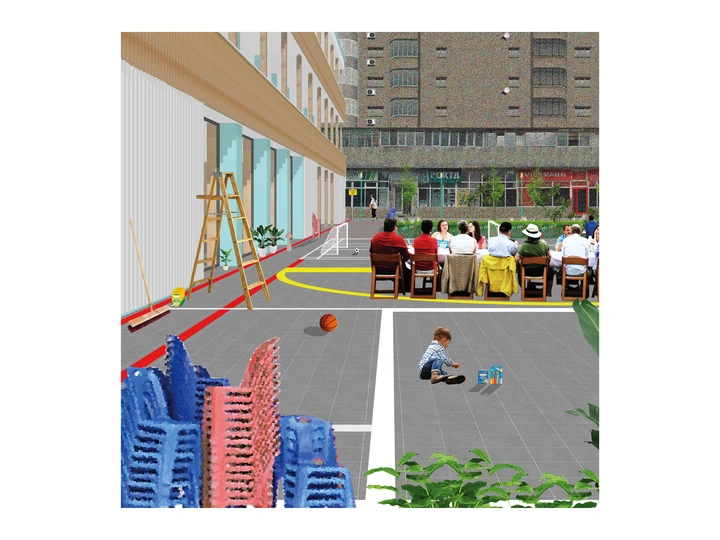A garden full of houses.

Marius Indrei, an architect and researcher based in Cluj-Napoca, pursued his architectural studies at Faculty of Architecture and Urban Planning Cluj-Napoca, Roma TRE and IUAV, who graduated in July 2023. Currently, Marius serves as a teaching associate and a PhD researcher at FAU Cluj-Napoca. He is recognized as one of the founding members of the research journal COTAA.
His doctoral studies extend the research initiated by his diploma project, delving into the theoretical dimensions of the concept of void within the context of post-war romanian planning systems. Throughout his academic journey, Marius has cultivated a particular interest in both the potential for transformation in domestic spaces and urban research.
He is presently practicing architecture and urban planning while working towards obtaining his architectural stamp duty in Romania.
Reflecting on the post-war planning systems as a means of modernizing many Romanian cities often reveals a stark contrast between the intended vision and the existing reality. While documenting the political dynamics of this process remains a prevalent theme among Romanian architects, there is a notable lack of discussion regarding the urban morphology of these new systems.
Throughout their four construction phases, socialist housing blocks underwent various morphological interventions within the city. Some were incorporated as new additions, while others replaced sections of the existing urban fabric.
The project seeks to analyze the textures formed by the spaces adjacent to these blocks, often characterized by their in-between nature. Today, these textures are perceived as fragmented segments of the city, existing as enclaves alongside the built environment. However, through historiographical urban studies, it can be argued that these textures possess their own spatial identity. They evolve from being mere remnants to becoming a new network of spaces with distinct qualities that shape the contemporary cityscape.
A proposed manifesto project for addressing this research challenge involves the concept of densification of the site. This concept suggests infilling this disorganized spaces within a communist block, potentially serving as a means to uplift this site. However, it is crucial to pose several questions: Does the design project emerge as a result of the research project? Do they complement each other? Does the design stand independently?